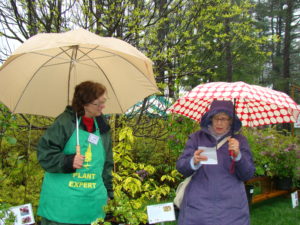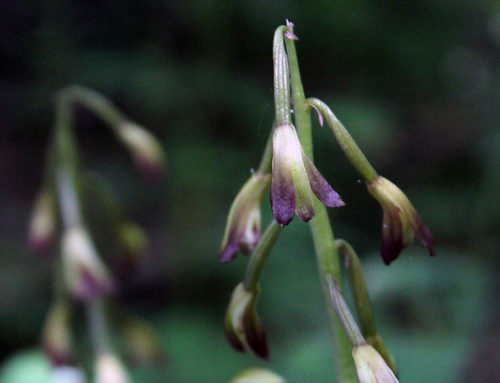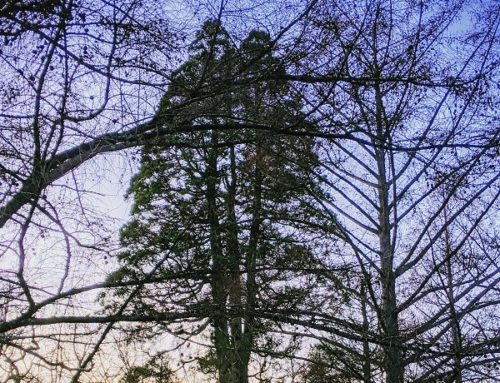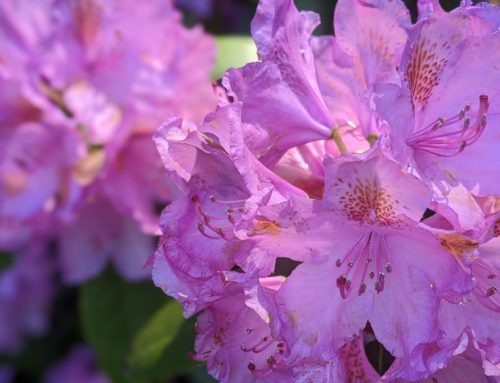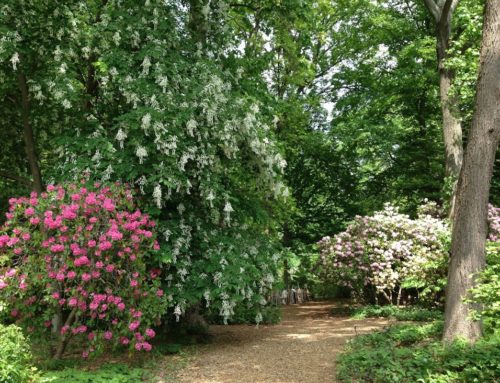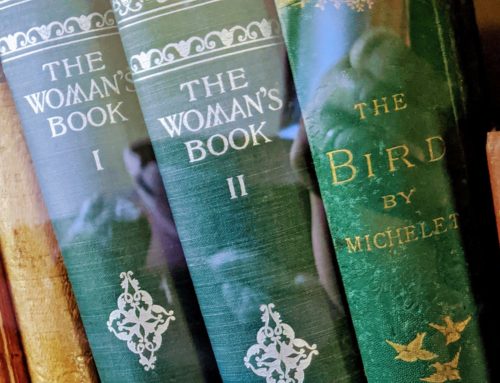For many people in the Brandywine region, May is much anticipated, for it is the beginning of nursery hopping season and many hours of walking up and down aisles in search of the perfect eco supporting plant that would make your neighbor green with envy. I very much look forward to all of the public gardens and preserves that stage a once-a-year plant sale with selections that they consider choice picks or is reflective of what is successful at their gardens or arboretum. At Tyler, this is certainly true with this year’s focus on groundcovers and our approach to the theme “We Got You Covered.”
Every March, I have the privilege of writing the plant descriptions to help shoppers make the best choices at the sale. This year, I would like to share the story of how the sale is staged, which makes it all the more special. I sat down with Austin Deputy, gardener, and the person driving the plant selections and processes. Austin has been doing this for ten years.
J: Do you know when the Plant Sale started? If yes, when?
A: I don’t believe that anyone on staff knows when Tyler’s Plant Sale began. We know that it was held at least as far back as the 1980s.
Fun fact: In the 80s some of the plants offered in the sale were dug from a small nursery that was near where the Butterfly House is today. It might be fun to pose this question to our visitor audience and see if anyone knows of sales happening before the 80s, or even better, see if they have pictures of those long-ago sales.
J: What happens behind the scenes months and weeks leading up to the Plant Sale?
A: Preparation for Tyler’s Plant Sale begins in December with determining the budget for the sale. Knowing this allows us to decide how many wholesale nurseries we will be purchasing plants from and how large those orders will be.
After wholesalers are selected, we begin to look at sales data from previous years and compare it to current plant availability. Plants are selected primarily based on sales data and availability. We also consider new varieties that are hitting the market and plants that have not been sold at our sale in recent years. The theme of the sale is also taken into consideration. With all of this in mind, we can select plants and place orders, reserving our plants for spring shipment.
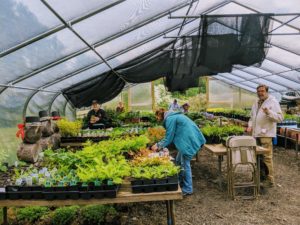
Once the orders are placed, (which is) in January through March, they are entered into our database. Descriptions are written for new plants and retail prices are determined. Three weeks before the sale, plants begin to arrive at Tyler. We take final inventory and print price labels with a bar code for each individual pot. Volunteers, known as plant preppers, stick the labels on pots. We apply around 6,000 labels in the three-week period before the sale. At the same time, benches, tables and tents are set up in the sales area. All of the plants are then moved to the sales area by volunteers once they have price labels.
J: What (when) was the best Plant Sale ever and why?
A: For me, probably the best sale was the year that we had almost no plants left over after the sale was finished. It only took one trip with one of our utility vehicles to move them from the Visitor Center back to the Horticulture Building.
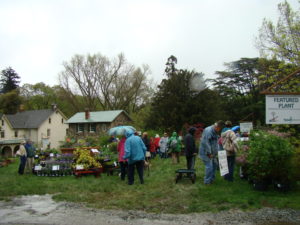
The worst is when it rains on the days of the sale. Rain is unpleasant for volunteers and staff as well as our shoppers.
J: Name plant(s) that you didn’t expect to sell but did very well and vice versa.
A: I remember one year we accidently received 24 lupines. They sold out almost immediately after the sale opened! Another year we had a whole bunch of cacti donated by Stoney Bank Nurseries. They had been used in their exhibit at the Philadelphia Flower Show and needed a permanent home. No one wanted the large cacti.
J: Comment about people’s taste and how they have changed or not. Trends?
A: In the nearly 10 years that I have been organizing the sale, I can’t say that I have seen any major shifts in taste. Based on trends, Tyler has cut back slightly on the number of woody plants that we offer. It can be difficult for our customers to fit more and more trees and shrubs into an established landscape, but there is always room for one more perennial or annual!
J: When did we start the ACCESS database? Why? What do we learn from it? Can we forecast?
A: Tyler started using an ACCESS database to organize the sale in the early 2000s. Volunteer Barbara Knight began creating and managing the database around that time. Last year she hit her 25th year volunteering at Tyler!
ACCESS is a powerful tool which allows us to track orders and inventory, create and print plant description cards, and record the history of what has been sold at our sales. For example, with a just a few clicks I can tell you that we sold Purple Coneflower in six of the past 10 sales. I know the quantity, pot size, source, wholesale cost, retail price and much more for each of those six years.
The database is also a repository of plant names. Tyler takes great care to be as accurate as possible with complete and up to date nomenclature. Each plant entered into our database receives a unique identification number which never changes. We call this the SPN or Scientific Plant Nomenclature. This number remains a constant identifier for a plant, which is important because plant names can change, making it impossible to keep records based on name alone.
J: Who are the wholesale nurseries that we work with?
A: We work with about a half dozen wholesale nurseries, all of which are located in Southeastern Pennsylvania, Maryland and New Jersey. We have good relationships with these growers and have ordered from many of them for over a decade. Some operations are small family run businesses, others are very large, such as Quality Greenhouses & Perennial Farm, which has 15-acres of heated greenhouses, 22-acres of perennial growing space and around 200 employees in the busy growing season.
J: What are the connoisseur plants of interest this year?
A: Tyler is fortunate to receive a number of donations each year from local nurseries, public gardens and members. Many of the plants we receive are not common and are sold in the Connoisseur section of our sale. Two that caught my attention already this spring are Tsuga canadensis ‘Albospica’ (a white tipped variety of Canadian hemlock) and Pieris phillyreifolia (climbing fetterbush). Please remember that we offer a very large diversity of plants at the sale – over 500! This means that some are in very limited supply. Shop early if there are specific plants that are must-haves for your garden! This year’s availability can be found on our website.
J: What plant(s) are you personally excited about?
A: I am excited about some of our uncommon natives such as Aplectrum hyemale (Adam & Eve orchid or putty root), Dioscorea villosa (wild yam vine) and Euonymus atropurpureus (American wahoo). I will be planting some American wahoo on my property this year. Along with some other natives, like Frangula caroliniana (Carolina buckthorn), it will be taking the place of about 30 invasive shrub honeysuckle that my wife and I removed this past winter.
In the months of January and all the way to the end of the sale, many staff and volunteers are involved in staging the three-day Plant Sale. During the sale, we have a cadre of horticulture professionals from the area that gather to support us as Plant Experts. Our staff, local landscape architects, garden writers to retired horticulture professors — make up this team. They are the folks in green aprons and are hovering over the plants! Have questions? We got you covered.
